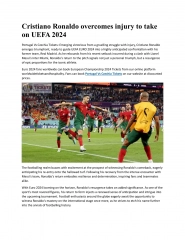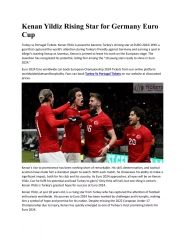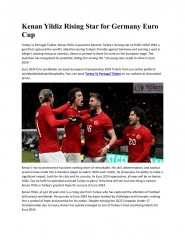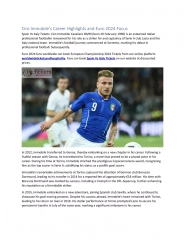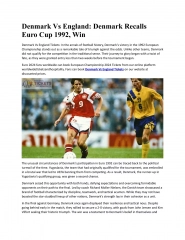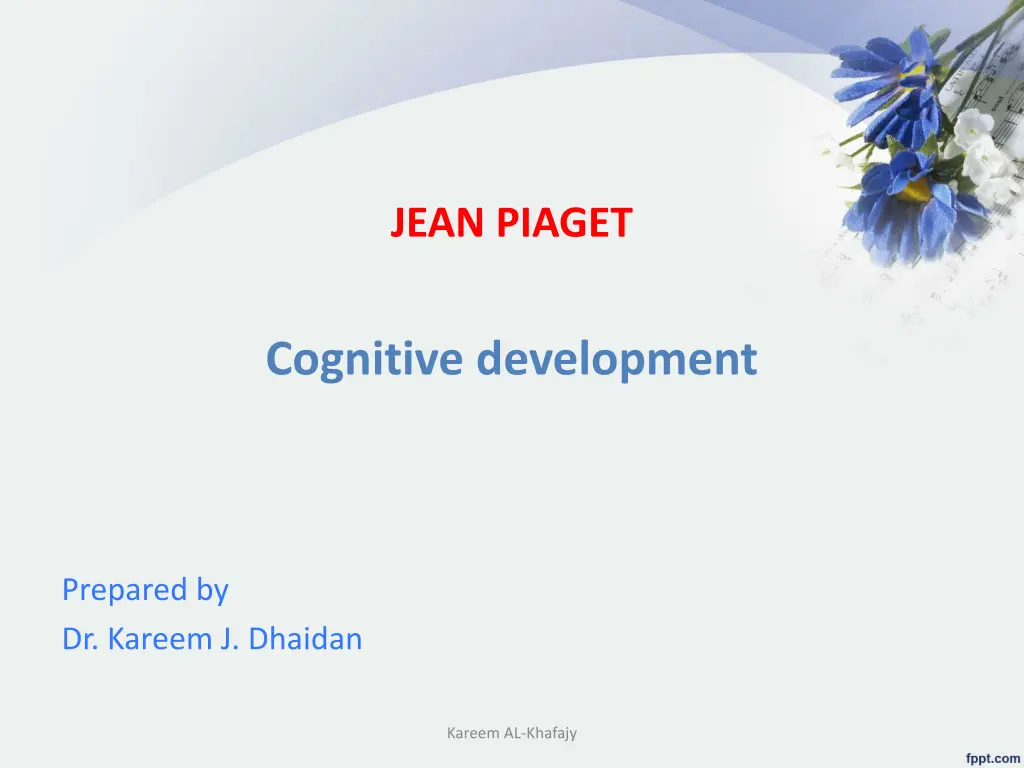
Understanding Piaget's Cognitive Development Principles
Explore Jean Piaget's groundbreaking theories on cognitive development, including the progression of mental abilities, the role of adaptation, and the principles of organization, adaptation, and equilibration. Discover how children build cognitive structures and make sense of the world around them through assimilation and accommodation.
Download Presentation

Please find below an Image/Link to download the presentation.
The content on the website is provided AS IS for your information and personal use only. It may not be sold, licensed, or shared on other websites without obtaining consent from the author. If you encounter any issues during the download, it is possible that the publisher has removed the file from their server.
You are allowed to download the files provided on this website for personal or commercial use, subject to the condition that they are used lawfully. All files are the property of their respective owners.
The content on the website is provided AS IS for your information and personal use only. It may not be sold, licensed, or shared on other websites without obtaining consent from the author.
E N D
Presentation Transcript
JEAN PIAGET Cognitive development Prepared by Dr. Kareem J. Dhaidan Kareem AL-Khafajy
Born in (Switzerland) on August 9, 1896. He died in Geneva on September 16, 1980. Kareem AL-Khafajy
Cognitive development represents a progression of mental abilities: illogical to logical thinking, from simple to complex problem solving, and from understanding concrete ideas to understanding abstract concepts. 5/28/2025 3
Piaget believed that cognitive development begins with an inborn ability to adapt to the environment. By rooting for nipple exploring the boundaries of the room, young children develop a more accurate picture of their surrounding and greater competence in dealing with them. 5/28/2025 4
The gradual development occurs through three interrelated principles: 1. Organization 2. Adaptation 3. Equilibration 5/28/2025 5
1.Organization: is the tendency to create increasingly complex cognitive structure, systems of knowledge or ways of thinking that incorporate more and more accurate image of reality. (Integration of knowledge into a system to make sense of the environment). These structures, called schemes , are organized pattern of behavior that a person uses to think in different kinds of situations. They are cognitive structures that represent a certain aspect of the world, and can be seen as categories which have certain pre-conceived ideas in them.
For example: An infant has a simple scheme for sucking but soon develops varied schemes for how to suck at the breast, a bottle, or a thumb. 5/28/2025 7
2. Adaptation: Adjustment to new information about the environment through two steps: 1. Assimilation , taking in information and incorporating it into existing cognitive structure. 2. Accommodation , changing one's cognitive structures to include the new knowledge. 5/28/2025 8
3. *Equilibration: The tendency to strive for equilibrium (balance) among cognitive elements within the organism and between the organism and the outside world.
Phases of Piagets cognitive developmental theory: 1. Sensory Motor. Period, (Birth to 2 years). 2. Preoperational Phase. 3-5 years old. 3. Concrete operations: 7-11 years of age 4. Formal Operational Period : 11 - 15/16 years 5/28/2025 10
1. Sensory Motor Period (Birth to 2 years). In this stage infants explore the world only by senses like touch-putting his fingers in the mouth. The child does not recognize himself as a separate organism. Infants cannot distinguish themselves from their environment. We can divide this period into several sub- periods. 5/28/2025 11
1. 1. This stage of cognitive development start at birth and lasts up to 2 years of age and is divided into 6 sub-stages: Sensorimotor stage. Sensorimotor stage. month). I. I. Use of reflexes stage ( Use of reflexes stage (0 0- -1 1 month). Characterized by repetition of body movement due to reflexes and the infant is totally autistic (not responding to external stimuli) 5/28/2025 12
II. Primary Circular reactions (1-4 months). Characterized by the following behaviors: Recognize familiar faces and objects (e.g. mother and bottle) Shows anticipation before feeding Discover part of own body through touching Awareness of strange surroundings indicates memory Becomes bored when left alone Accept anybody and no stranger anxiety is observed 5/28/2025 13
III. Secondary Circular Reactions (4-8 months). Characterized by the following behaviors: Search for object that had fallen from him (object permanency) Able to tolerate some frustration and delayed gratification Imitates sounds and simple gesture Actions are deliberate but not goal-directed 5/28/2025 14
Great interest in mirror image of himself Beginning of independence (self-feeding) Language development (few words) which is the beginning of recognition of symbols as type of communication Realizes that parents are present even if not in visual field 5/28/2025 15
IV. IV. Coordination of secondary Schemata Coordination of secondary Schemata and the Application to new situations and the Application to new situations ( (8 8- -12 12 months). months). This sub This sub- -stage characterized by the following stage characterized by the following behaviors: behaviors: Beginning of intellectual reasoning manifested by Beginning of intellectual reasoning manifested by active searches for a hidden object active searches for a hidden object (Object (Object Permanence: Permanence: Concept that objects still exist when Concept that objects still exist when they are out of sight) they are out of sight)
Associate symbols with events by Associate symbols with events by comprehending meanings of words and simple comprehending meanings of words and simple commands and knowing the meaning of gestures commands and knowing the meaning of gestures (e.g. bye (e.g. bye- - bye) bye) Is able to put objects in container Is able to put objects in container Works to get toy that is out of reach Works to get toy that is out of reach Get away from mother to explore surrounding Get away from mother to explore surrounding Kareem AL-Khafajy
V. (After V. (After 12 Tertiary circular reactions. Tertiary circular reactions. 12 months of age up to months of age up to 18 18 months) months) Children begin to find a Children begin to find a variety of ways of producing an variety of ways of producing an outcome outcome other than the process by which the event has other than the process by which the event has occurred in the child occurred in the child s own past experience. s own past experience. 1. 1. Experimenting and deliberate manipulation are taken Experimenting and deliberate manipulation are taken up. up. 2. 2. Exploring distance Exploring distance 3. 3. They try new activities and use They try new activities and use trial and error problems problems 4. 4. Rituals are important Rituals are important trial and error in solving in solving
VI. 18-24 Months. Mental combinations ( Inventions of new means ) Children at this stage can mentally represent events - they no longer confined to trial and error to solve problems Symbolic thought allows toddlers to begin to think about events and anticipate their consequences without always resorting to action They can begin to demonstrate insight. Can use symbols as gestures and words, and can pretend
2. Preoperational Phase. Piaget's cognitive theory actually does not include a period specifically for children 3-5 years old. The preoperational phase comprises the age span from 2-7 years and is divided into two stages: i. The preconceptual phase, ages 2-4 ii. The phase of intuitive thought, ages 4-7. During the preconceptual phase children are egocentric (e.g.. Can t take others point of view). While during the intuitive phase, there is a shift from totally egocentric thought to social awareness and the ability to consider other viewpoints. This transition is very closely associated with the development of the superego.
The child is able to think and verbalize his mental processes without having to act out his thinking. However, he can only think of one idea at a time, he can only think of one idea at a time, a a concept known as centration (inability to think of all parts in terms of the whole). Preschoolers judge what they see by the immediate perceptual clues given to them.
For example, if two lines are equal length are presented in such a way that one appears longer than the other, the child will state that one line is longer, even if he measures the lines with a ruler and finds that each has the same length. The child therefore judges experiences by outside appearance and results, not by intrinsic, logical thinking. Kareem AL-Khafajy
For the nurse to understand that children assimilators For the nurse to understand that children assimilators in their thinking and with verbal communication she in their thinking and with verbal communication she will be able to understand will be able to understand the child. the child. For better communication it's important to use For better communication it's important to use "play" as a vehicle to understand children of this age group. Play becomes the child's work of understanding, adjusting to, and working out his life's experiences. Because of the child's rich imagination and unlimited ability to invent and imitate, all kinds of play hold therapeutic and communicative value. "play"
Therefore, to know what a child is really thinking Therefore, to know what a child is really thinking demands skill, time, and patience of those willing to demands skill, time, and patience of those willing to learn to look beyond the words and into the hearts learn to look beyond the words and into the hearts and minds of children. and minds of children. Preschoolers increasingly use language without Preschoolers increasingly use language without comprehending the meaning of words, particularly comprehending the meaning of words, particularly concepts of concepts of right or left right or left, , time time, and , and causality causality. .
The child may use the concepts correctly but The child may use the concepts correctly but only in the circumstances he has learned them. only in the circumstances he has learned them. For example, he may know how to put on his shoes by For example, he may know how to put on his shoes by remembering that the buckle is always on the outside remembering that the buckle is always on the outside of the foot. However, if different shoes have no of the foot. However, if different shoes have no buckles, he cannot reason which shoe fits which foot. buckles, he cannot reason which shoe fits which foot. Kareem AL-Khafajy
Superficially causality Superficially causality resembles logical resembles logical thought. The child explains a concept as he thought. The child explains a concept as he heard it described by others, but his understanding is heard it described by others, but his understanding is limited. limited. Their concept of death is, that it is being reversible. Their concept of death is, that it is being reversible. Nurses must understand that time as a concept is best Nurses must understand that time as a concept is best explained in explained in relationship to an event, relationship to an event, such as such as " " Your mother will visit you after you finish your Your mother will visit you after you finish your lunch". lunch".
Avoiding terms such as yesterday, tomorrow, Avoiding terms such as yesterday, tomorrow, next week, to express when an event is expected next week, to express when an event is expected to occur and associating time with usual expected daily to occur and associating time with usual expected daily occurrences help children learn about temporal occurrences help children learn about temporal relationship and increase their trust in others. relationship and increase their trust in others. Children are usually not able to tell about the time in a Children are usually not able to tell about the time in a clock until clock until 7 7 or or 8 8 years of age. years of age. Kareem AL-Khafajy
Preschoolers thinking is often described Preschoolers thinking is often described as as magical magical. . Because of their egocentrism, Because of their egocentrism, they they believe that thoughts are all believe that thoughts are all- -powerful. powerful. A typical A typical example is wishing a new sibling dead. If that sibling example is wishing a new sibling dead. If that sibling does die, young children think their wish caused the does die, young children think their wish caused the death. death. Preschoolers believe in the power of words and accept Preschoolers believe in the power of words and accept their meaning literally. their meaning literally.
A significant example of this type of thinking A significant example of this type of thinking is calling the child "bad" because he did is calling the child "bad" because he did something wrong. In the child's mind telling him that he something wrong. In the child's mind telling him that he is bad means that he is bad. For this reason it is better to is bad means that he is bad. For this reason it is better to relate such words to the act by saying, for example, relate such words to the act by saying, for example, "That was a bad thing to do". "That was a bad thing to do". Kareem AL-Khafajy
3. 3.Concrete operations: from Concrete operations: from 7 7- -11 11 years of age years of age Masters the concept of reversibility. Masters the concept of reversibility. The concept of The concept of conservation conservation, or the idea that a mass , or the idea that a mass can be changed in size, shape, volume, or length can be changed in size, shape, volume, or length without losing or adding to the original mass, without losing or adding to the original mass, is not is not understood understood. . The child is able to classify things. The child is able to classify things.
Piaget calls Piaget calls it concrete operational period, because children in this age are able to deal to deal with concrete facts logically, with concrete facts logically, but can not think but can not think abstractly abstractly. Now if you give them the little problem of the short of the short broad glass and tall thin glass, broad glass and tall thin glass, they realize immediately that the quantity of the water does not does not change change.
Because children in concrete operation cannot reason cannot reason abstractly they can solve visual visual problems better than verbal problems. Example: Example: I have three trees in the garden, A, B, & I have three trees in the garden, A, B, & C. C. A is taller than C but smaller than B. Which tree A is taller than C but smaller than B. Which tree is the tallest? is the tallest? Kareem AL-Khafajy
4. Formal Operational Period ( Formal Operational Period (11 years) years) 11 to to 15 15/ /16 16 Students become able to think abstractly as well as logically. They think about their future and parts they will play in society as adults. They also think about other people's thinking often critically. Consider possibilities, hypotheses. Can use deductive deductive (general to specific) and inductive inductive (specific to general) reasoning.




